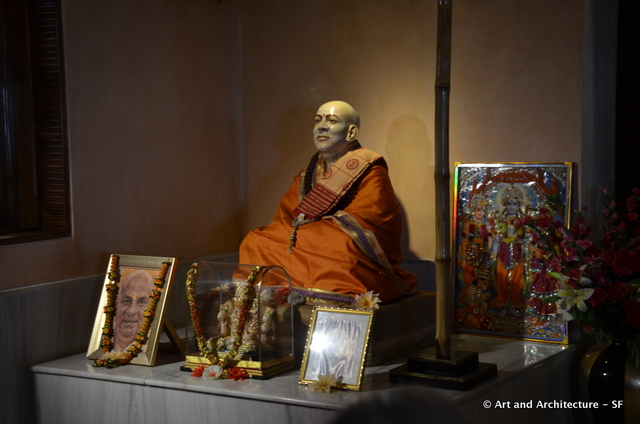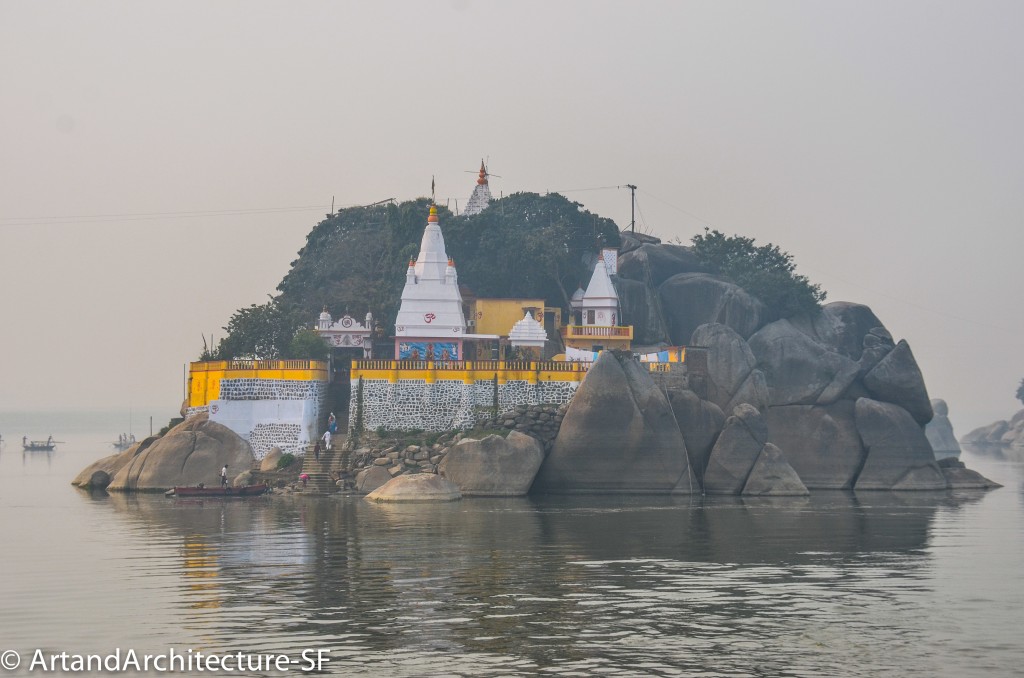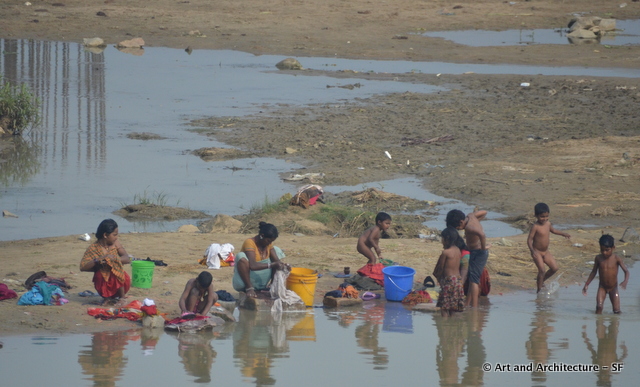Our first stop in the morning was to the Bihar School of Yoga. The school was established in 1963 and also serves as an Ashram with about 50% western students. We left with a sack of propaganda leaflets and a Rudraksha seed.
The seed is thought to be the eye of Shiva. Some also think that the word Ohm is written in the seed.
We boarded the boat and off down the Ganges. The river has very little or no commercial traffic on it, so sailing is quiet and peaceful.
The R.V. Bengal Ganga is an interesting vessel. The company was started by our river guide Sumit Bhattachryya in 2009. He has had to open doors like no ones business. When he first began there were no ghats to land at in many of our stopovers, and getting parts for the boat should say, the propeller, drop off, was impossible. Today, going to Vikramshila University we were in a caravan of Tata jeeps that he had to form, it is such an interesting venture to hear him discuss. The boat only runs six months of the year and only twice a month, so as we cruise down the river, we are still unique. People come out along the shores and wave, and when we pull into a docking area people come out to greet us and they wave and wave as we go through town. This is a very unique period of time in this area for Indian tourism, and it is interesting to be a part of it. There will be the inevitable discussion of destroying outlying villages with tourism, but that needs to be countered with the influx of dollars to help feed and educate, which is far more rare when you get out into the rural areas than one thinks. I realize that these villages will change with tourism, but that is the nature of life itself.
On the river we are accompanied by two boats, a forward boat that works as essentially a sounding boat for depth, and then our own ferry in case we moor too far away to walk onto shore. The boats do not sail at night, as the Ganges, varies between 43 feet in depth and 6 feet, difficult to navigate even on a good day.
Along the way today we passed these two granite rocks. One is crowned with a mosque and the other holds a temple of Ghaibinath Siva. This is a highlight as much of the scenery we pass is farm land.
*
Floating along the banks we noticed this straw figure or Kumhar. These figures of gods and goddesses, created during festivals, are framed on an armature of sticks, then wrapped with straw, and then covered with clay and painted. “In the clay there is the seed of all creation, a drop of God that springs to life with prayer.” The best of the artists are from the Kumharkalli section of Calcutta.
























































